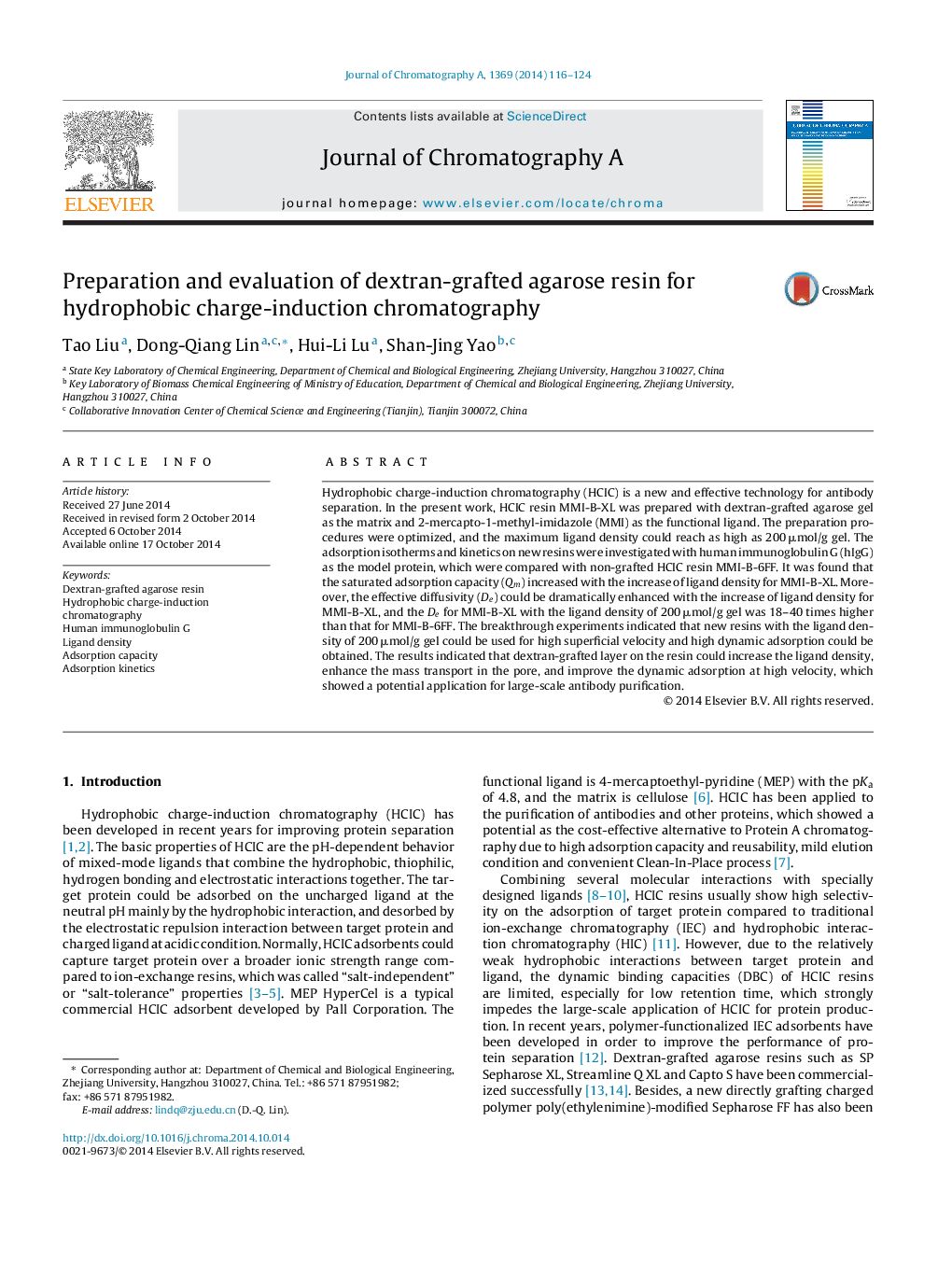| Article ID | Journal | Published Year | Pages | File Type |
|---|---|---|---|---|
| 1199674 | Journal of Chromatography A | 2014 | 9 Pages |
•Dextran-grafted HCIC resins MMI-B-XL were prepared with high ligand density.•The saturated adsorption capacity increased with increasing ligand density.•The effective pore diffusivity was improved compared to non-grafted resins.•The dynamic binding capacities of IgG were improved at high linear velocities.•High ligand density is necessary for dextran-grafted HCIC resins.
Hydrophobic charge-induction chromatography (HCIC) is a new and effective technology for antibody separation. In the present work, HCIC resin MMI-B-XL was prepared with dextran-grafted agarose gel as the matrix and 2-mercapto-1-methyl-imidazole (MMI) as the functional ligand. The preparation procedures were optimized, and the maximum ligand density could reach as high as 200 μmol/g gel. The adsorption isotherms and kinetics on new resins were investigated with human immunoglobulin G (hIgG) as the model protein, which were compared with non-grafted HCIC resin MMI-B-6FF. It was found that the saturated adsorption capacity (Qm) increased with the increase of ligand density for MMI-B-XL. Moreover, the effective diffusivity (De) could be dramatically enhanced with the increase of ligand density for MMI-B-XL, and the De for MMI-B-XL with the ligand density of 200 μmol/g gel was 18–40 times higher than that for MMI-B-6FF. The breakthrough experiments indicated that new resins with the ligand density of 200 μmol/g gel could be used for high superficial velocity and high dynamic adsorption could be obtained. The results indicated that dextran-grafted layer on the resin could increase the ligand density, enhance the mass transport in the pore, and improve the dynamic adsorption at high velocity, which showed a potential application for large-scale antibody purification.
